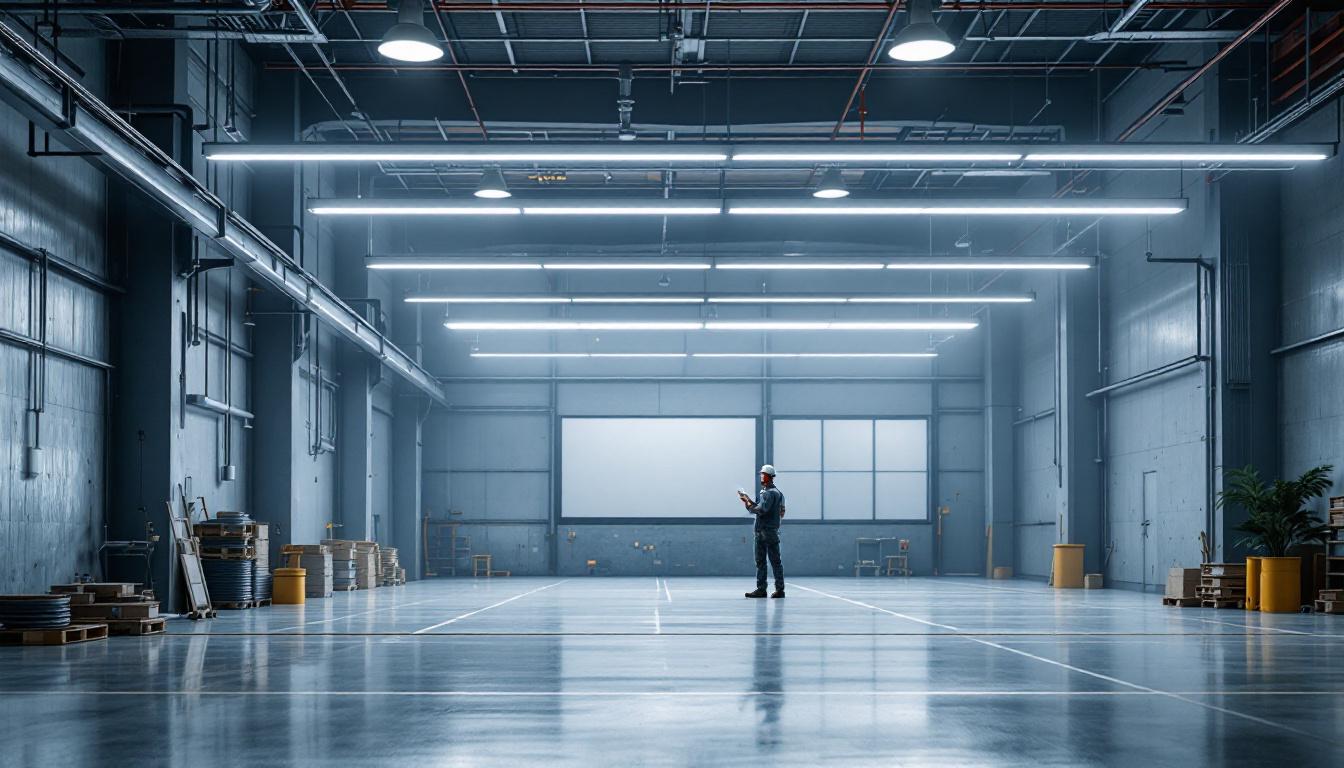
LED grow bulbs have revolutionized the horticultural lighting industry, providing an efficient and effective solution for indoor gardening and commercial cultivation. These bulbs emit light in specific wavelengths that are beneficial for plant growth, making them a preferred choice among lighting contractors and growers alike. However, understanding the nuances of LED technology is crucial for ensuring optimal performance and avoiding common issues.
One of the primary advantages of LED grow bulbs is their energy efficiency. Compared to traditional lighting options, such as fluorescent or high-intensity discharge (HID) lights, LEDs consume significantly less power while providing the same or even greater light output. This efficiency translates into lower energy bills, making them an attractive option for both small-scale and commercial growers.
Additionally, LED grow bulbs have a longer lifespan, often lasting up to 50,000 hours or more. This durability reduces the frequency of replacements, saving both time and money for contractors and their clients. Furthermore, LEDs produce less heat, which minimizes the risk of heat stress on plants and allows for closer placement of lights without damaging foliage. This feature is particularly beneficial in tightly packed grow spaces where maximizing light exposure is essential for plant health and productivity.
Moreover, the compact size of LED bulbs allows for versatile installation options, enabling growers to create customized lighting setups tailored to their specific needs. The ability to easily adjust the height and angle of the lights ensures that plants receive uniform light distribution, which is vital for preventing uneven growth and promoting a healthy canopy. This flexibility also means that growers can adapt their lighting strategies as their plants develop, optimizing conditions for each growth stage.
The light spectrum emitted by LED grow bulbs plays a crucial role in plant development. Different stages of growth require specific wavelengths; for instance, blue light promotes vegetative growth, while red light encourages flowering and fruiting. Many LED grow bulbs are designed to emit a full spectrum of light, catering to the varying needs of plants throughout their life cycle.
Contractors should be aware of the importance of selecting bulbs that offer adjustable spectrums or those that can be tailored to the specific plants being cultivated. This adaptability can lead to enhanced growth rates and yields, ultimately benefiting both the contractor and the end-user. Furthermore, advanced LED systems now incorporate features like programmable timers and sensors that can automatically adjust light intensity and duration based on the plants’ requirements. Such technology not only simplifies the growing process but also ensures that plants receive the optimal light exposure at all times, promoting healthier growth and more robust harvests.
In addition to the benefits of tailored light spectrums, it’s essential to consider the impact of light duration on plant growth. Many growers utilize techniques such as photoperiod manipulation to induce flowering or to extend the vegetative phase. By understanding the specific light needs of different plant species, contractors can implement lighting schedules that maximize growth potential and align with the natural rhythms of the plants. This knowledge is invaluable for optimizing production cycles and achieving consistent results in both small and large-scale operations.
While LED grow bulbs offer numerous benefits, they are not without their challenges. Understanding these potential issues can help lighting contractors avoid pitfalls and ensure a successful installation. By being proactive, contractors can enhance client satisfaction and foster long-term relationships.
One of the most significant challenges in the LED market is the inconsistency in quality among different manufacturers. Not all LED grow bulbs are created equal; some may not provide the promised light output or spectrum. This inconsistency can lead to poor plant growth and ultimately disappoint clients.
To mitigate this issue, contractors should source products from reputable suppliers with a track record of quality. Conducting thorough research and reading reviews can help identify reliable brands. Additionally, requesting samples for testing can provide insight into a product’s performance before making bulk purchases. Furthermore, it’s beneficial to stay updated with industry standards and certifications, such as those from the Energy Star program, which can serve as a benchmark for quality assurance. By aligning with these standards, contractors can ensure that the products they offer not only meet client expectations but also contribute to energy efficiency and sustainability.
While LEDs produce less heat than traditional lighting, they can still overheat if not properly managed. Overheating can lead to reduced efficiency, shorter lifespans, and even failure of the bulbs. Contractors must ensure that the installation includes adequate ventilation and cooling systems to maintain optimal operating temperatures.
In some cases, using heat sinks or fans can help dissipate heat effectively. Educating clients about the importance of maintaining proper environmental conditions can also prevent overheating issues. This proactive approach can enhance the longevity and performance of LED systems. Additionally, it’s essential to consider the layout of the grow space; ensuring that bulbs are spaced correctly can promote even light distribution and reduce the risk of localized overheating. Regular maintenance checks can also help identify potential cooling issues before they escalate, allowing contractors to make timely adjustments and keep the grow environment stable and productive.
Selecting the appropriate LED grow bulbs is essential for achieving desired results. Contractors must consider various factors, including the type of plants being grown, the size of the growing area, and the specific light spectrum required for optimal growth.
There are several types of LED grow bulbs available on the market, each designed for specific applications. Full-spectrum bulbs are versatile and suitable for all stages of plant growth, while specialized bulbs may focus on specific wavelengths to enhance certain growth phases.
Contractors should assess the needs of their clients and recommend the most suitable type of bulb. For instance, if a client is growing flowering plants, suggesting a bulb that emphasizes red wavelengths can lead to better results. Understanding the unique requirements of different plants can help contractors provide tailored solutions.
Another crucial factor to consider is light intensity and coverage area. Different plants have varying light requirements, and ensuring that the right intensity reaches all parts of the growing area is vital. Contractors should calculate the necessary wattage and lumens based on the size of the space and the types of plants being cultivated.
Utilizing light meters can help assess the intensity of light at various points in the growing area, ensuring that all plants receive adequate exposure. This attention to detail can significantly impact the success of the cultivation process.
Proper installation of LED grow bulbs is critical for maximizing their effectiveness. Lighting contractors must adhere to best practices to ensure that the bulbs function optimally and meet the needs of the plants being grown.
The positioning and height of LED grow bulbs can greatly influence their performance. Placing bulbs too close to plants can lead to light burn, while positioning them too far away can result in insufficient light exposure. Contractors should recommend optimal distances based on the specific bulb type and plant species.
Adjustable mounting systems can provide flexibility, allowing clients to change the height of the bulbs as plants grow. This adaptability can help maintain the ideal light intensity throughout the growth cycle.
Ensuring that the electrical system is compatible with the LED grow bulbs is another essential aspect of installation. Contractors should verify that the wiring, circuit capacity, and power supply meet the requirements of the chosen bulbs. This attention to detail can prevent electrical issues and ensure the longevity of the lighting system.
Additionally, incorporating timers and dimmers can enhance control over the lighting schedule and intensity, further optimizing conditions for plant growth. Educating clients on how to use these features can lead to better results and increased satisfaction.
Dust and debris can accumulate on the surface of LED bulbs, reducing their light output and efficiency. Contractors should recommend a regular cleaning schedule to maintain optimal performance. Using a soft, damp cloth to wipe down the bulbs can help keep them clean without damaging the surface.
Additionally, checking for loose connections or damaged wiring during routine maintenance can prevent potential failures. Encouraging clients to be proactive in their maintenance efforts can lead to longer-lasting and more efficient lighting systems.
Despite best efforts, issues may still arise with LED grow bulbs. Contractors should be prepared to troubleshoot common problems, such as flickering lights, inadequate light output, or overheating. Understanding the potential causes of these issues can help contractors provide quick and effective solutions.
For instance, flickering lights may indicate a loose connection or an incompatible dimmer switch. Inadequate light output could result from dirty bulbs or insufficient wattage for the growing area. By being knowledgeable about these common problems, contractors can enhance their reputation as reliable professionals in the industry.
LED grow bulbs offer numerous advantages for indoor gardening and commercial cultivation, but their successful implementation requires careful consideration and expertise. Lighting contractors play a crucial role in guiding clients through the selection, installation, and maintenance processes.
By understanding the benefits and potential issues associated with LED grow bulbs, contractors can provide valuable insights and solutions that enhance plant growth and client satisfaction. Through proactive measures, attention to detail, and ongoing education, lighting contractors can navigate the evolving landscape of LED technology and foster long-term success in the horticultural lighting industry.
Ready to elevate your lighting projects with the best LED grow bulbs on the market? Look no further than LumenWholesale, where we specialize in providing contractors with high-quality, spec-grade lighting solutions at unbeatable wholesale prices. Say goodbye to local distributor markups and hello to our extensive selection that meets the highest industry standards. With LumenWholesale, you’ll enjoy the convenience of free shipping on bulk orders, ensuring you get premium lighting at the best value — without any hidden fees. Make the smart choice for your indoor gardening and commercial cultivation projects. Wholesale Lighting at the Best Value is just a click away.

Discover the benefits of a closet light with a pull chain, a simple yet effective solution for energy-efficient lighting.

Discover how outdoor flood lights can illuminate new business opportunities for lighting contractors.

Discover essential insights into linear high bay lighting with our comprehensive guide tailored for lighting contractors.

Discover the vital insights every lighting contractor needs to know about electric covers.